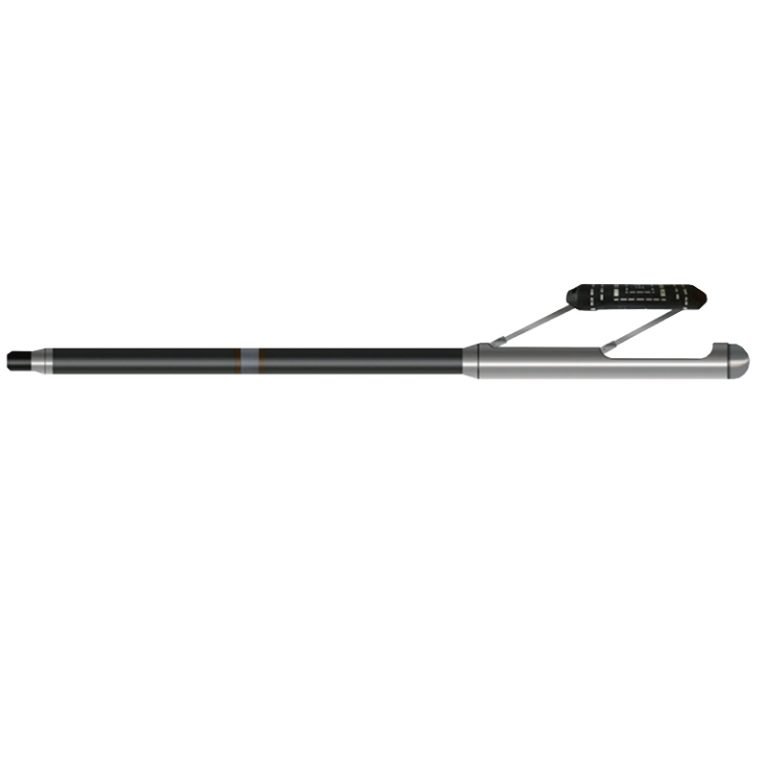Welcome to Geotech!

JZZ-1 Compensated Neutron Probe
PRODUCT PARAMETERS
- Improve the sensitivity of the detector to ensure accurate and stable measurement results.
- The weak source design adopted reduces the radiation dose to the user.
- The two-stage source tank is used to further facilitate operation and enhance protection.
Description
 Abstract
Abstract
JZZ-1 Compensated Neutron Probe is a well logging probe developed based on nuclear logging methods. It uses isotope plutonium as a neutron source (optional controllable source). The fast neutrons generated by the neutron source are decelerated by the formation and become thermal neutrons. Part of the thermal neutrons will be captured by the nuclei in the formation due to further deceleration. The part not captured by the formation nuclei is detected by diffusion to the detector. The measured neutron porosity count rate can directly reflect the porosity of the formation.

 Applicable Conditions
Applicable Conditions
● Cased
● Bare hole fill with water or mud
 Applications
Applications
● Exploration and quality evaluation of gas, liquid and other mineral deposits
● Identify lithology and calculate porosity and permeability
● Delineate and evaluate aquifers
 Features
Features
● Improve the sensitivity of the detector to ensure accurate and stable measurement results.
● The weak source design adopted reduces the radiation dose to the user.
● The two-stage source tank is used to further facilitate operation and enhance protection.
 Specifications
Specifications
| Neutron source | Plutonium-beryllium source 5MeV, Intensity≥3.7x10Bq (controllable source neutron tube optional) |
| Detector | 3He tube, Φ25.4x240mm |
| Counting range | 1~60000cps |
| Neutron porosity measurement range | 1%~60% |
| Signal output | Bipolar encoding |
FAQ
① In SI, it is m·s-2, and one percent of it is the international unit abbreviation g.u.;
② Conversion between SI and CGS: 1g.u.=10-1 mGal
Gravitational field: The space around the earth with gravity is called the gravitational field.
Gravitational potential: The gravitational potential W in the gravitational field is equal to the work done by a particle of unit mass moving from infinity to that point.
① The normal gravity field of the earth: Assuming that the earth is a rotating ellipsoid (reference plane), the surface is glossy, the internal density is uniform, or it is distributed in concentric layers, the density of each layer is uniform, and the deviation of the shape of the ellipsoid from the geoid is very small, then the gravity field generated by the earth is the normal gravity field.
② The normal gravity value is only related to the latitude, the smallest at the equator and the largest at the poles, with a difference of about 50,000 g.u.; the rate of change of the normal gravity value with latitude is the largest at 45° latitude, and zero at the equator and the poles; the normal gravity value decreases with increasing altitude, and its rate of change is -3.086 g.u.. The main feature of the long-term change is the "westward drift" of the geomagnetic elements, both the dipole field and the non-dipole field drift westward, and have a global nature.
The gravitational field strength is equal to the gravitational acceleration in both numerical and dimensional terms, and the two are in the same direction. In gravity exploration, all references to gravity refer to gravitational acceleration. The gravitational field strength at a point in space is equal to the gravitational acceleration at that point.
Gravity exploration is an exploration method that is based on the density difference of rocks and ores. Since density difference will cause local changes in the normal gravity field of the earth (i.e. gravity anomaly), it is used to solve geological problems by observing and studying gravity anomalies.
-1.png)








